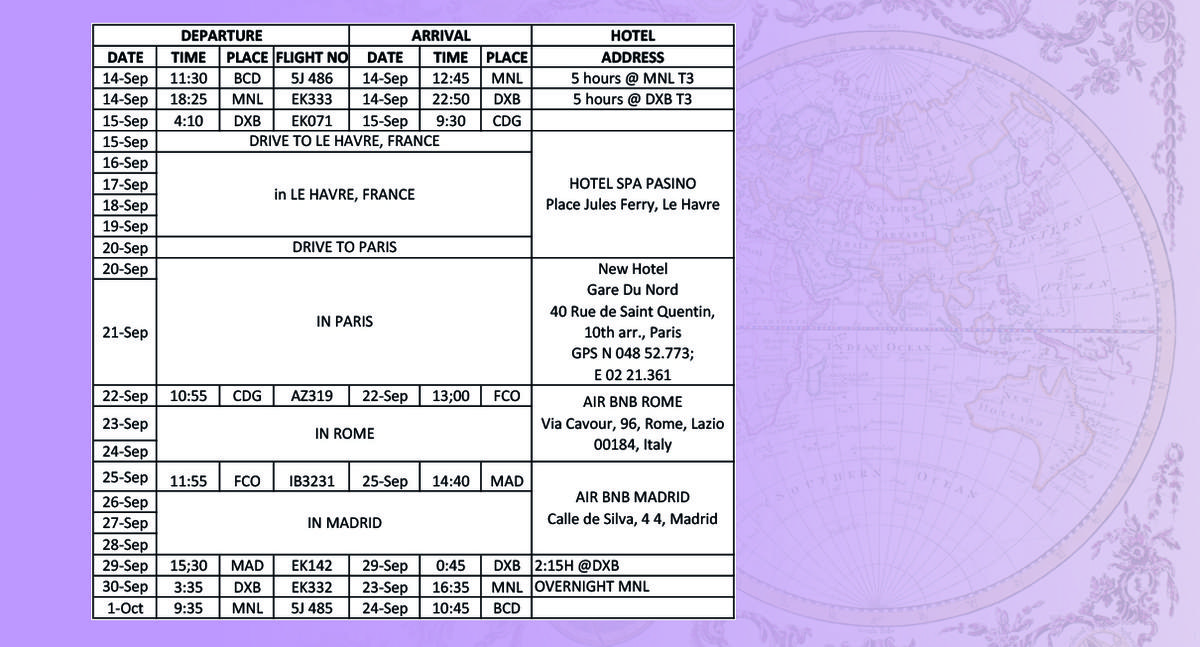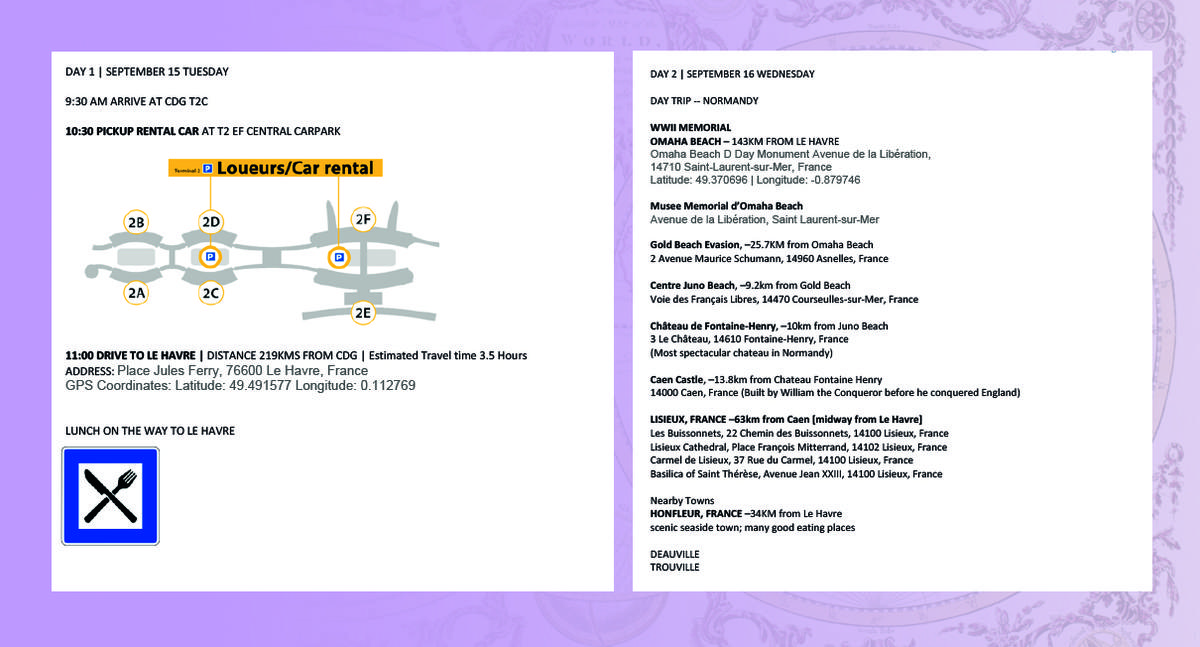I love to travel. I love not only the adventure of the actual journey; I also take joy in planning the itinerary and researching the places and fun things to do at each destination. It is also great fun looking for discounts, freebies, and other ways to do more for less. To make sure that all my effort and research pays off, I prepare a travel roadbook.
Roadbooks are used by rally drivers for multiday drives to make sure they are on the right path. The daily activity includes instructions and driving directions, coordinates and GPS of the stops, etc., and that is exactly what I do.
What is great about preparing your own roadbook before you depart from home, is that you’ll have everything on hand in your phone or tablet, even when you have no access to the Internet. In my experience, having prior knowledge about the places I visit and what to expect helps me travel with confidence.

PREPARATORY STEPS–Do Your Research
Once you’ve selected where you want to go, but before you make your travel arrangements, start doing some research as to the best days/times to go to a particular place, then arrange your itinerary around that.
Knowing the best times or days to visit will allow you to maximize your time with less hassle and stress. With a little patience and the help of the Internet, you’ll know that the best day to visit the Louvre is on a Wednesday or Friday because it is open from 9:00am to 9:45pm.
If you want to see the Pope up close, first make sure he will be in Rome during your visit, then make sure you’re in Rome on a Tuesday so you can get entrance tickets to St. Peter’s Square for the Wednesday morning papal audience.
Browsing the web will also let you know that you can also save a few bucks if you go to Toledo on a Sunday as entrance to the Alcazar de Toledo is free. Then you can spend the whole morning in the Alcazar and explore the Museo del Ejercito. Go to lunch at around 1:00pm then proceed to the Cathedral, which opens to tourists at 2:00pm on Sundays to see the awe-inspiring painting of the Disrobing of Christ by El Greco.
The big cities—Paris, Rome, Madrid, etc.—are great places to visit, but exploring the countryside can be a different experience altogether. If you do decide to go out of the major cities, renting a car and driving is the practical choice, as you can be more flexible with your schedule.
Once you’ve finalized your itinerary—i.e., obtained the necessary visas, purchased your airline tickets, booked all your hotels—purchase entrance tickets to the major museums (Louvre, Vatican Museum, Prado) online so that you can skip the long lines. There’s usually a special lane for visitors who have pre-purchased their tickets.
The Itinerary
The itinerary is always Page 1 of my roadbook. I do this on a table format for each day, from departure to arrival, with the following columns: DEPARTURE Date, Time & Place, Flight# | ARRIVAL Date, Time & Place | Hotel Name and Address.
Here’s a sample of the first page of my most recent roadbook.

Daily Schedule of Activities
In the succeeding pages, I put in the daily activities with estimated travel times, distances, places of interest, and of course eating places. And I always add visual guides like location maps and schematics, as well as what road signs to look for.
Having a roadbook is a good way to organize your travel schedule but it does not mean that you cannot be flexible. To be realistic about it, you’ll probably want to visit more places and do more activities than your schedule allows. But I pack my roadbook with all interesting places to visit anyway, then decide which ones look interesting or most achievable on the day of the visit.

Travel Documents
On the last pages of the Roadbook, I keep copies of all my travel documents including my e-ticket, hotel vouchers, car rental confirmation, and other online booking confirmations, etc.
What’s good about having a roadbook is that you can actually put in your thoughts and scribble remarks—even add photos to it every day—and you have an instant journal-cum-scrapbook of your whole trip.
Also published in November 2015
Words by Presy Alba
